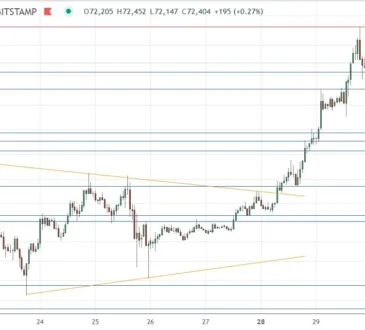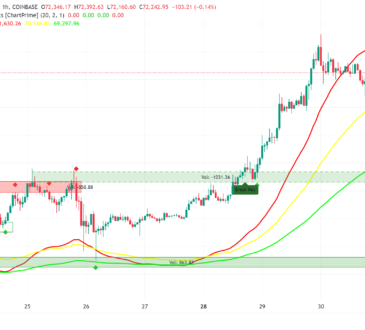Bitcoin (BTC) reached as high as $73,544 (BTC/USD) late Tuesday night, which put it tantalizingly close to its all-time high of $73,750. It could set a new record very soon.

At Bitcoin’s current price of $72,061, we are seeing a retreat from the recent high, but that could quickly reverse course. We expect Bitcoin will shoot past the all-time high within the next day or two at the latest.
The last time Bitcoin set a record high was back in March. Now, we have seen some economic change since then, with improved inflation, a better jobs market, lower unemployment rate, and a lower interest rate. On top of that, Bitcoin ETFs have made this crypto more desirable and accessible.
What this could all mean for Bitcoin in the near future is that when it hits that all-time high, the coin may not retreat. It could establish a higher support level than what we are seeing now. In fact, widespread current analysis points to Bitcoin easily trading within a range at this time that would allow it to surpass its all-time high without leaving its current trading range.
Bitcoin May Be Overlooked
At the moment, Bitcoin may be undervalued and underappreciated, with internet searches comparatively low for the coin right now. Even with the record high within its reach, Britain is not getting the attention that the crypto industry thinks it should, and AI searches are still hogging the limelight in a big way.
That means that investors could take advantage of the coin’s low profile for now and buy in while the price is still relatively low. Before the price point shoots up, this would be a good opportunity to invest, because we estimate that Bitcoin will easily hit $74,000 next month.
Industry veterans have been predicting a new record high for Bitcoin before the end of 2024, and thus predictions have been coming all year long, especially since that new high was achieved in March.
Now, Bitcoin is a position where it can climb far higher than a new high and start making considerable progress toward $80K. We could see that new price level in early 2025, especially if inflation continues to decline and a new Fed interest rate cut occurs.





